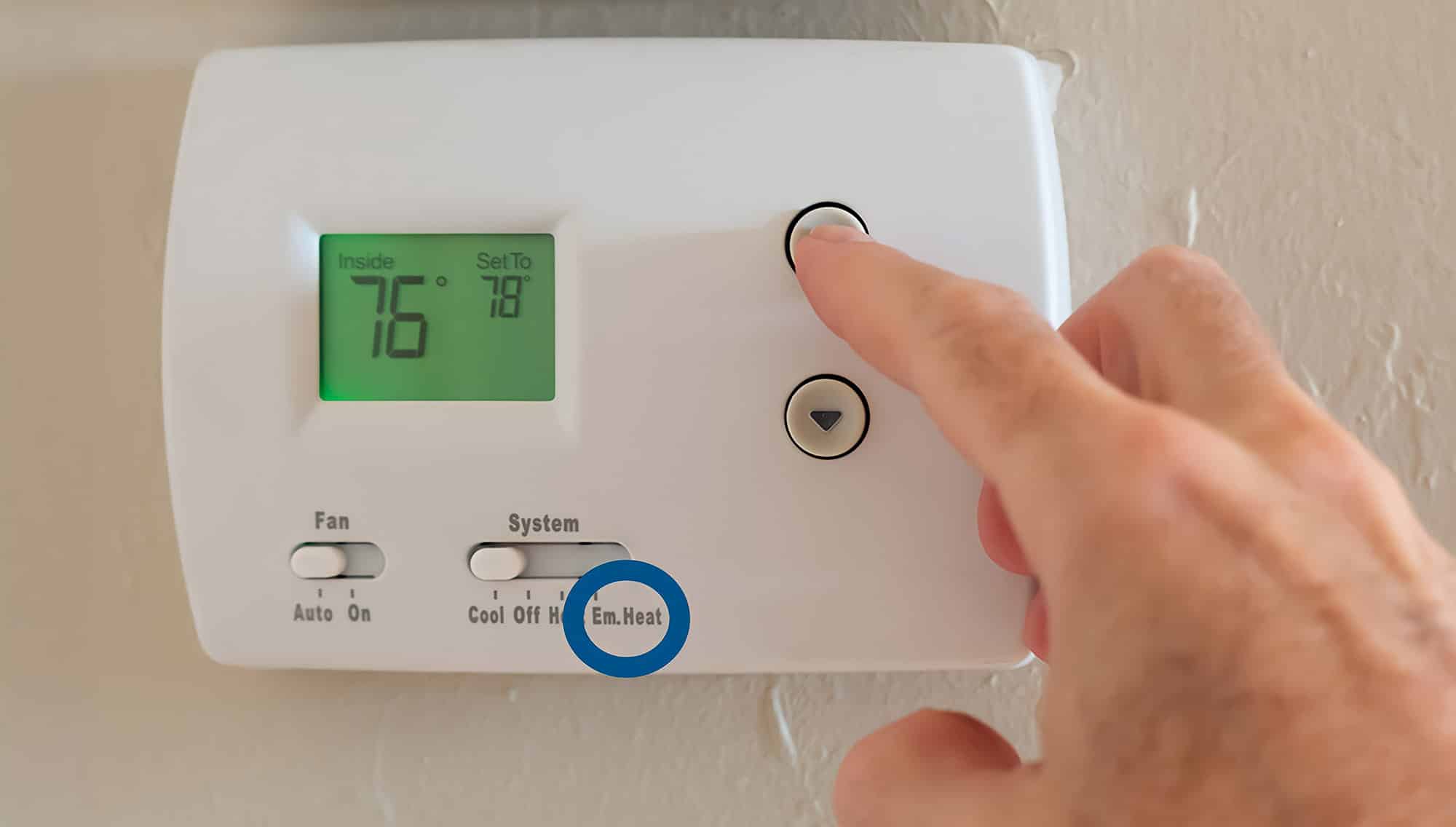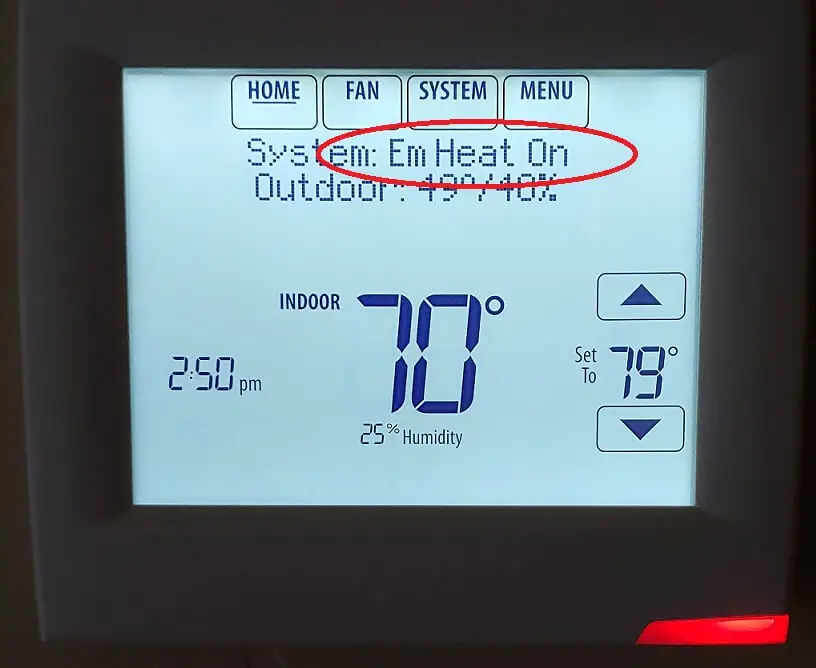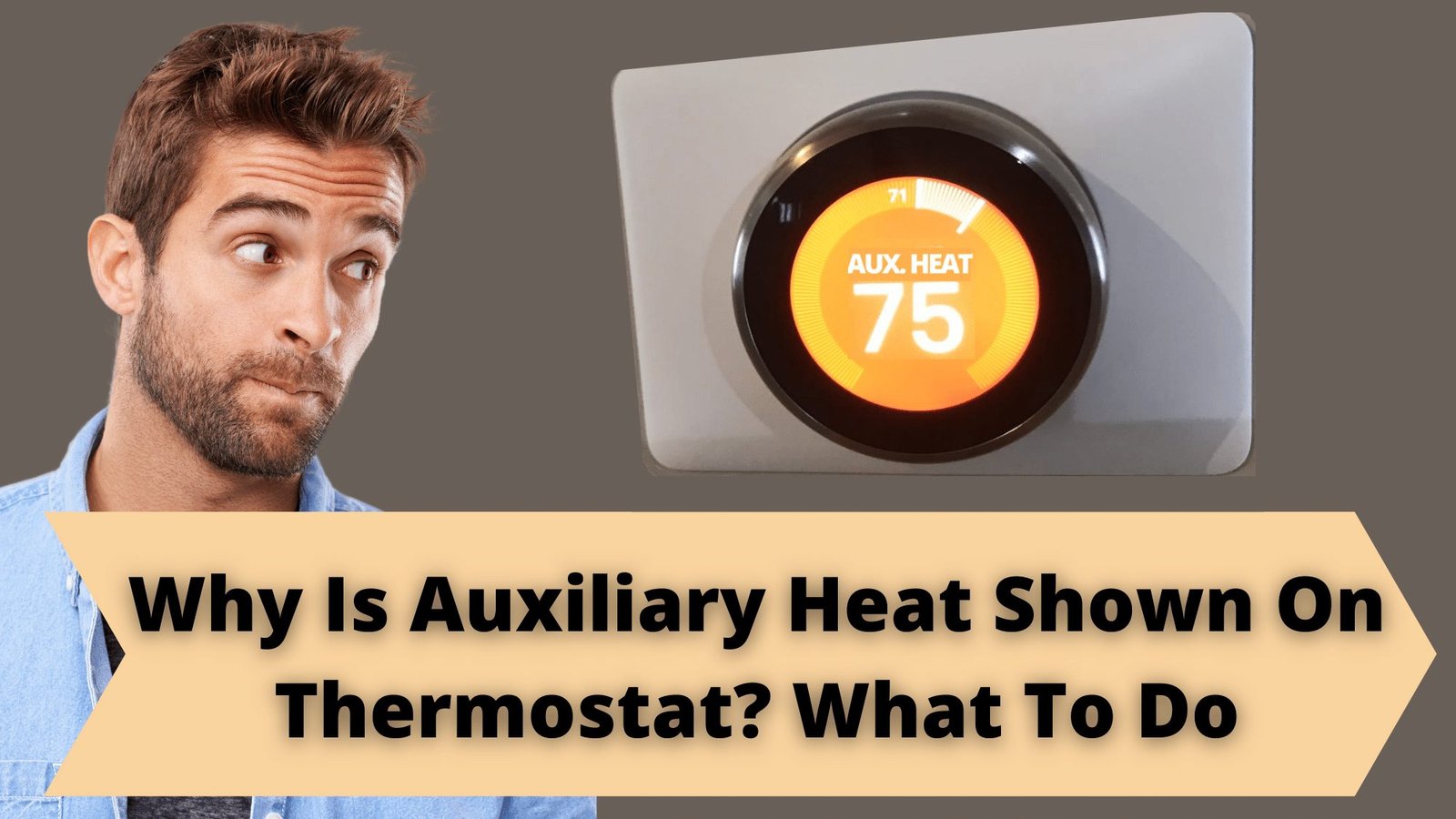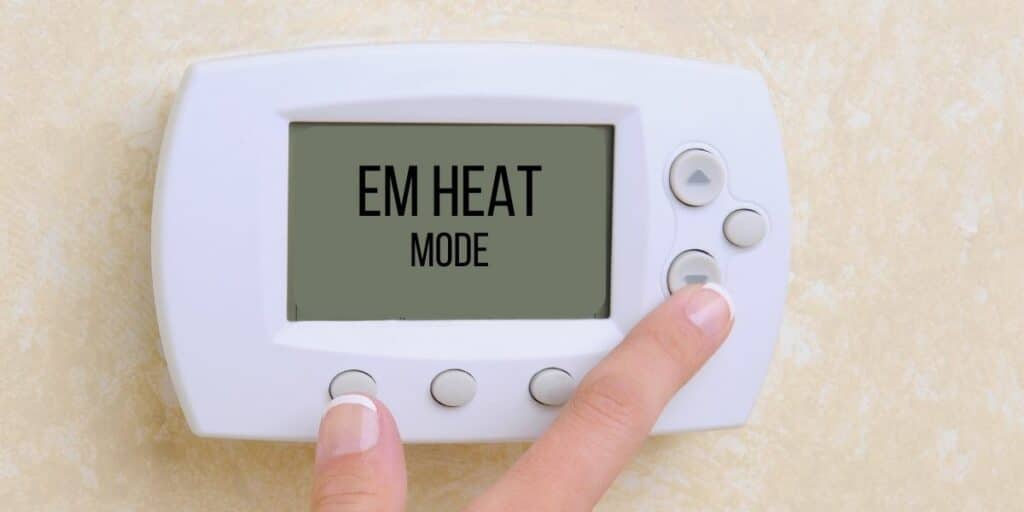What Does Em Heat Mean On The Thermostat

What Does "EM Heat" Mean on My Thermostat? Common Questions Answered
Seeing "EM Heat" on your thermostat can be confusing. It usually means your system is using its emergency heat function. This article provides straightforward answers to frequently asked questions about what EM Heat is, why it's on, and what to do about it.
Q1: What exactly is EM Heat or Emergency Heat?
Emergency heat is a backup heating system in heat pump systems. Heat pumps are designed to both heat and cool your home. When the outside temperature drops too low, a heat pump may struggle to provide sufficient heat. That's where emergency heat comes in. It's essentially a secondary, typically electric, heating system that kicks in to provide supplemental heat when the heat pump can't keep up.
Think of it like this: your heat pump is the primary heating source, and the emergency heat is like a space heater, providing extra warmth when it gets really cold.
Q2: How does EM Heat differ from Auxiliary Heat?
This is a common point of confusion. Both EM Heat and Auxiliary Heat are backup heating sources for heat pumps, but they are activated differently and serve slightly different purposes.
- Auxiliary Heat (AUX): This usually refers to a supplemental heating element that automatically activates when the heat pump needs a boost to reach the set temperature. It might come on during particularly cold weather or when the thermostat setting is raised significantly. Auxiliary heat is integrated into the normal operation of the heat pump system.
- Emergency Heat (EM): This is a manual setting. You usually have to select "EM Heat" on your thermostat yourself. It bypasses the heat pump entirely and relies solely on the electric resistance heaters. Emergency heat is designed for situations where the heat pump is completely broken or malfunctioning and needs to be bypassed.
In essence, auxiliary heat is intended for temporary assistance, while emergency heat is for longer-term heating due to a system failure.
Q3: Why is EM Heat so expensive to run?
Emergency heat is very energy-intensive and therefore more expensive to operate than a heat pump. This is because it relies on electric resistance heating, which converts electricity directly into heat. This process is not as energy-efficient as a heat pump, which transfers heat from the outside air (even in cold weather) into your home.
Think of a toaster or a space heater – they use a lot of electricity to generate heat. EM Heat operates on the same principle. Running EM Heat for an extended period can significantly increase your electricity bill.
Key Reasons for Higher Cost:
- Electric Resistance Heating: Less efficient than heat pump technology.
- Direct Energy Conversion: Electricity is directly converted to heat, with no 'heat transfer' advantage.
- Higher Electricity Consumption: More kilowatt-hours (kWh) are used to produce the same amount of heat compared to a heat pump.
Q4: My thermostat says "EM Heat" – what should I do?
The first thing to do is determine why EM Heat is activated.
- Did you accidentally turn it on? Some thermostats have buttons that are easy to press unintentionally. Make sure you didn't accidentally select EM Heat. If so, switch back to the "Heat" setting.
- Is your heat pump malfunctioning? If your heat pump isn't producing heat, or is making strange noises, it may be broken. In this case, EM Heat is providing necessary warmth, but you should contact a qualified HVAC technician immediately to diagnose and repair the heat pump.
- Is it extremely cold outside? While rare, in extremely low temperatures (well below freezing and outside the operating range of your heat pump), the EM Heat might be necessary to maintain a comfortable indoor temperature. However, if this happens frequently, it could indicate that your heat pump is undersized for your climate.
Important Steps:
- Check your thermostat settings.
- Inspect your heat pump for any obvious problems (ice buildup, unusual noises).
- Monitor the outdoor temperature.
- Contact an HVAC professional if the problem persists or if you suspect a malfunction.
Do not rely on EM Heat for extended periods without addressing the underlying issue. It's a temporary solution, not a long-term heating strategy.
Q5: How do I prevent EM Heat from turning on unnecessarily?
Preventing unnecessary EM Heat activation involves maintaining your heat pump and understanding its limitations.
- Regular Maintenance: Schedule annual checkups for your heat pump. This includes cleaning coils, checking refrigerant levels, and inspecting components for wear and tear. A well-maintained heat pump operates more efficiently and is less likely to fail.
- Clean Air Filters: Clogged air filters restrict airflow, making the heat pump work harder and potentially triggering auxiliary or emergency heat. Replace air filters regularly (usually every 1-3 months, depending on usage and filter type).
- Proper Thermostat Settings: Avoid drastic temperature changes on your thermostat. Raising the temperature significantly can force the heat pump to work overtime and engage auxiliary heat, which may eventually lead to unnecessary EM Heat usage.
- Seal Air Leaks: Seal any air leaks around windows, doors, and other openings in your home. This helps to maintain a consistent temperature and reduces the strain on your heating system.
- Understand Your Heat Pump's Limitations: Be aware of the operating range of your heat pump. If you live in an area with very cold winters, consider supplementing your heat pump with a backup heating system (like a gas furnace) or using EM Heat sparingly only when absolutely necessary.
- Smart Thermostat Programming: Program your smart thermostat to anticipate temperature changes. Instead of raising the temperature drastically when you get home, gradually increase it over time.
By taking these steps, you can ensure that your heat pump operates efficiently and reduce the likelihood of EM Heat activating unnecessarily, saving you money on your energy bills.
Q6: Can I use EM Heat as my primary heating source?
While technically possible, using EM Heat as your primary heating source is strongly discouraged due to its high energy consumption and cost. It's designed as a backup system for emergencies, not for everyday heating.
Reasons Not To Use EM Heat as Primary Heating:
- Extremely High Energy Bills: Electric resistance heating is far less efficient than other heating methods.
- Strain on Electrical System: EM Heat can draw a significant amount of power, potentially overloading your electrical circuits.
- Reduced Lifespan of Heating Elements: Continuous use can shorten the lifespan of the heating elements in the emergency heat system.
If your heat pump is constantly malfunctioning or unable to keep up with your heating needs, it's better to invest in a more reliable and efficient primary heating system, such as a gas furnace, or to replace the existing heat pump with a model better suited to your climate.
Q7: My heat pump seems to be working, but EM Heat is still on. What could be wrong?
If your heat pump appears to be functioning correctly but EM Heat is still activated, there could be a few possible causes:
- Thermostat Malfunction: The thermostat itself might be faulty and incorrectly signaling the emergency heat to turn on. Try resetting your thermostat or contacting the manufacturer for support.
- Wiring Issues: There could be a wiring problem that is causing the EM Heat to activate even when it shouldn't. This requires a professional HVAC technician to diagnose and repair.
- Sensor Problems: Some heat pumps have sensors that detect when emergency heat is needed. A faulty sensor could be triggering the EM Heat unnecessarily.
- Defrost Cycle Issue: During cold weather, heat pumps go through defrost cycles to remove ice buildup. If the defrost cycle isn't working correctly, it could cause the EM Heat to activate unnecessarily.
- Incorrect DIP Switch Settings: DIP switches on the control board of the heat pump or thermostat might be incorrectly configured, causing the EM Heat to engage improperly. This requires professional knowledge to adjust safely.
In this situation, it's best to contact a qualified HVAC technician to inspect your system and identify the root cause of the problem. They can diagnose the issue accurately and recommend the appropriate repairs.










